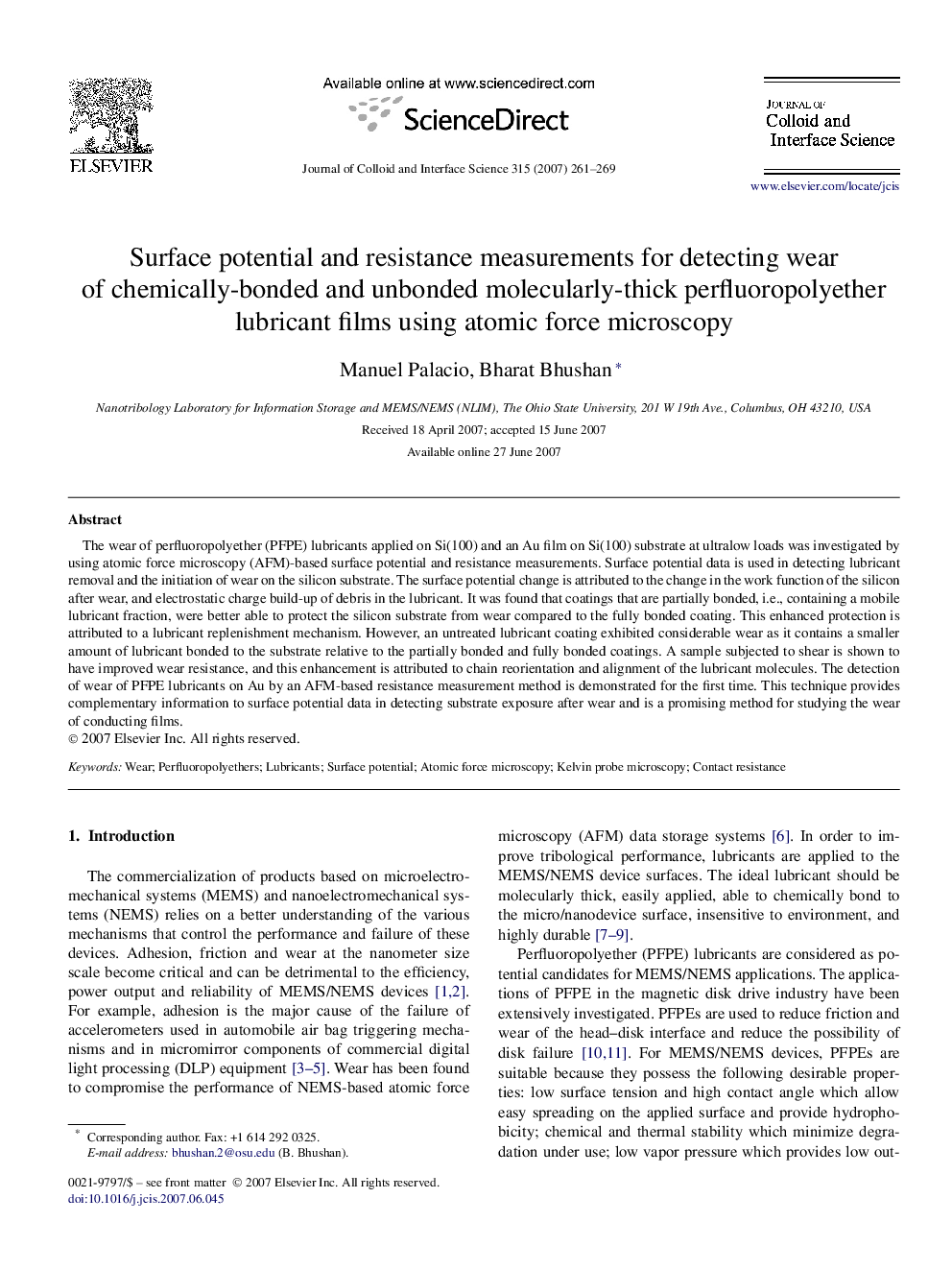| Article ID | Journal | Published Year | Pages | File Type |
|---|---|---|---|---|
| 612285 | Journal of Colloid and Interface Science | 2007 | 9 Pages |
The wear of perfluoropolyether (PFPE) lubricants applied on Si(100) and an Au film on Si(100) substrate at ultralow loads was investigated by using atomic force microscopy (AFM)-based surface potential and resistance measurements. Surface potential data is used in detecting lubricant removal and the initiation of wear on the silicon substrate. The surface potential change is attributed to the change in the work function of the silicon after wear, and electrostatic charge build-up of debris in the lubricant. It was found that coatings that are partially bonded, i.e., containing a mobile lubricant fraction, were better able to protect the silicon substrate from wear compared to the fully bonded coating. This enhanced protection is attributed to a lubricant replenishment mechanism. However, an untreated lubricant coating exhibited considerable wear as it contains a smaller amount of lubricant bonded to the substrate relative to the partially bonded and fully bonded coatings. A sample subjected to shear is shown to have improved wear resistance, and this enhancement is attributed to chain reorientation and alignment of the lubricant molecules. The detection of wear of PFPE lubricants on Au by an AFM-based resistance measurement method is demonstrated for the first time. This technique provides complementary information to surface potential data in detecting substrate exposure after wear and is a promising method for studying the wear of conducting films.
Graphical abstractThe wear of perfluoropolyether (PFPE) lubricants applied on Si(100) and a Au film on Si(100) substrate at ultralow loads was investigated by using atomic force microscopy (AFM)-based surface potential and resistance measurements. Surface potential data is used in detecting lubricant removal and the initiation of wear on the silicon substrate. The detection of wear of PFPE lubricants on Au by an AFM-based resistance measurement method is demonstrated for the first time.Figure optionsDownload full-size imageDownload as PowerPoint slide
